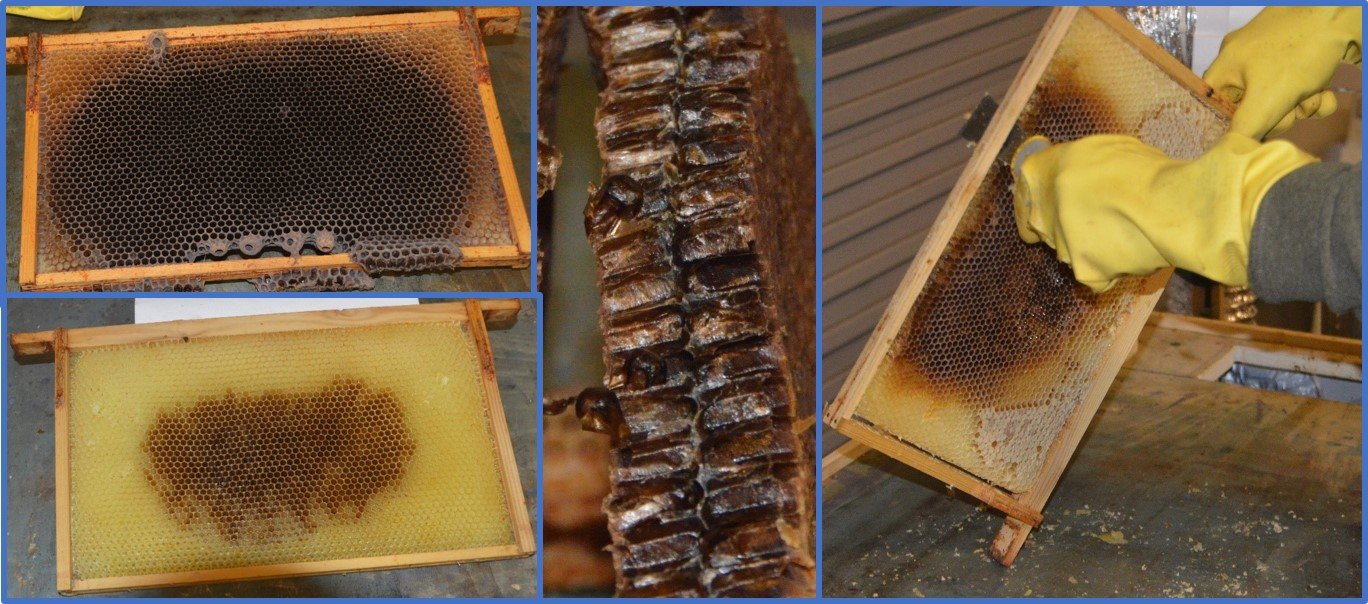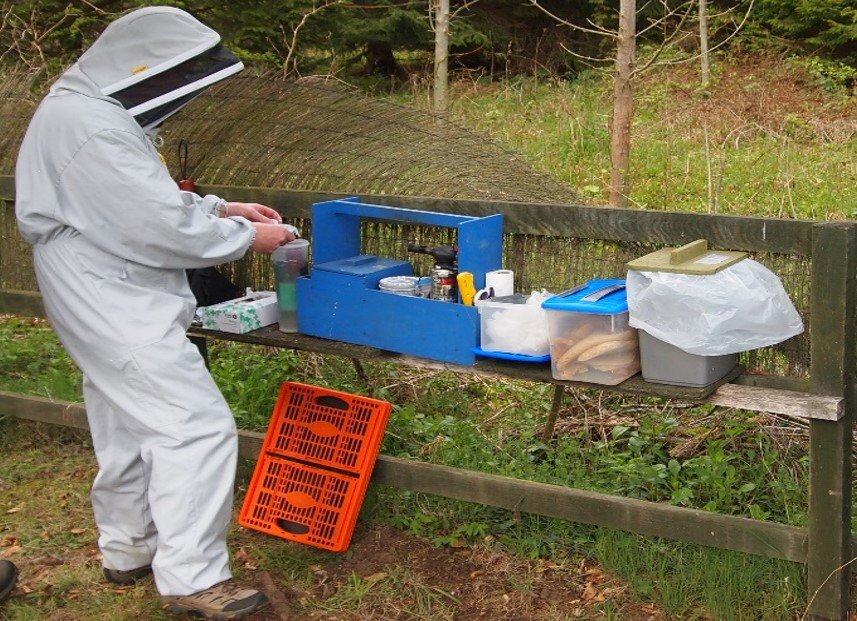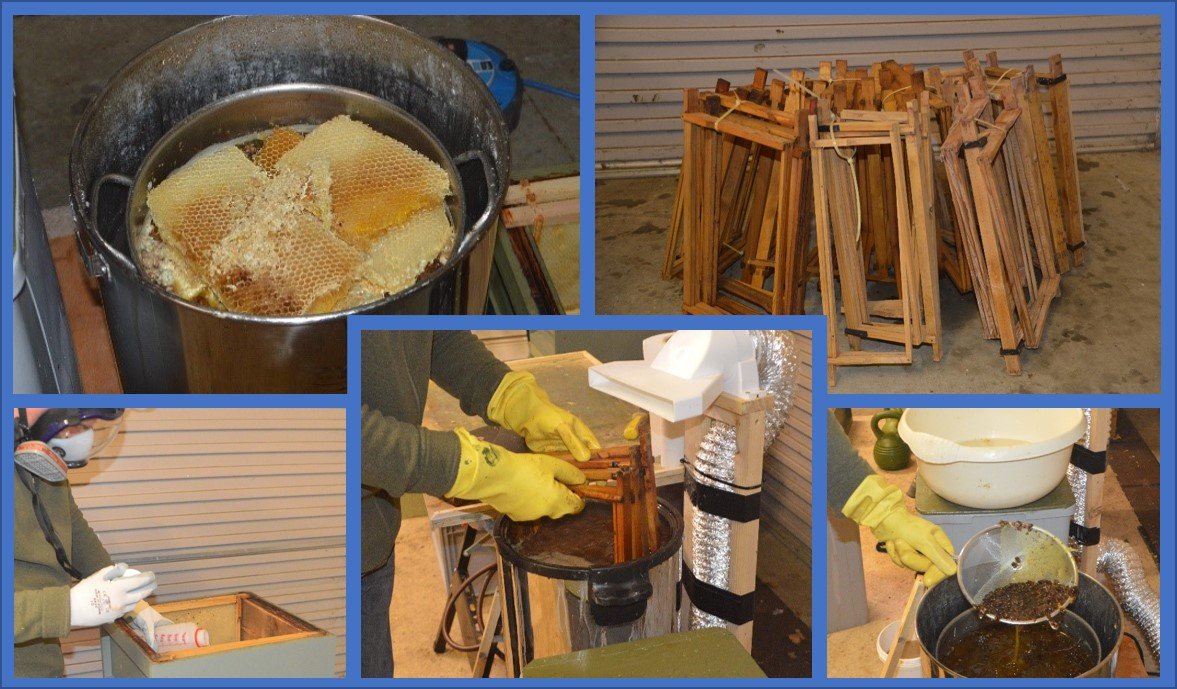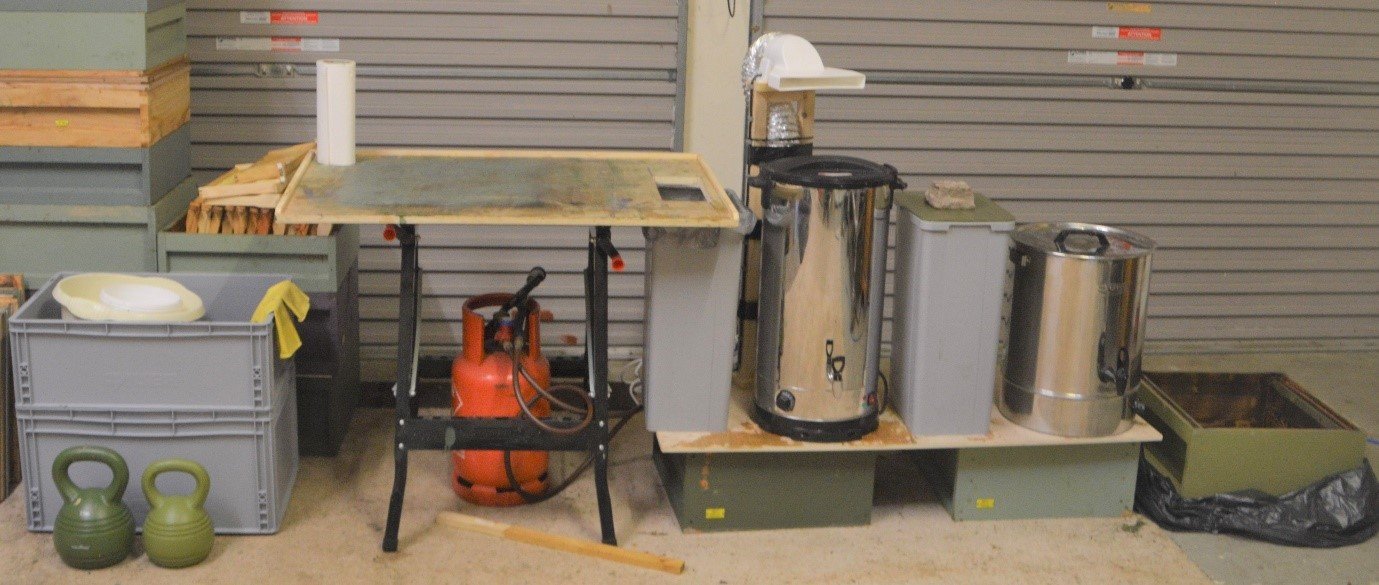Cleaning & sterilisation for small-scale beekeepers – Part Two – Assessing Brood Frames
This is the second blog in a series of three. Together they aim to show a simple setup and methods for the cleaning & sterilisation of equipment, for use by small-scale beekeepers. The focus of this blog is the assessment of brood frames.
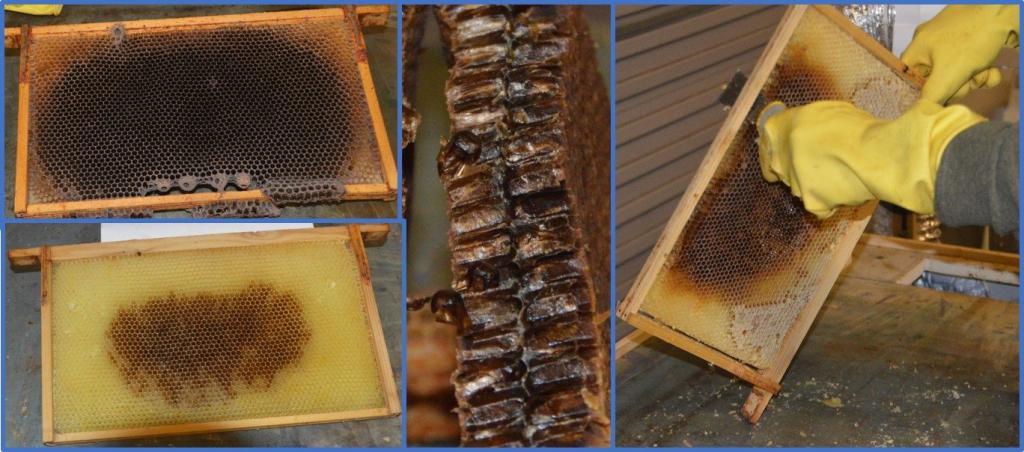
Click here to go back to the first blog in the cleaning and sterilisation series. “Cleaning & sterilisation for small-scale beekeepers – part one – Equipment”
How effective are our simple sterilisation methods against AFB & EFB?
We know that we are legally required, by the Bee Diseases and pest control order 2006, to inform the Bee Inspector immediately, if we suspect any of our colonies have EFB or AFB. As responsible bee keepers we also check our bees regularly for the signs of foul brood diseases. Particularly AFB and EFB. Click here to see the National Bee unit leaflet on foul brood diseases.
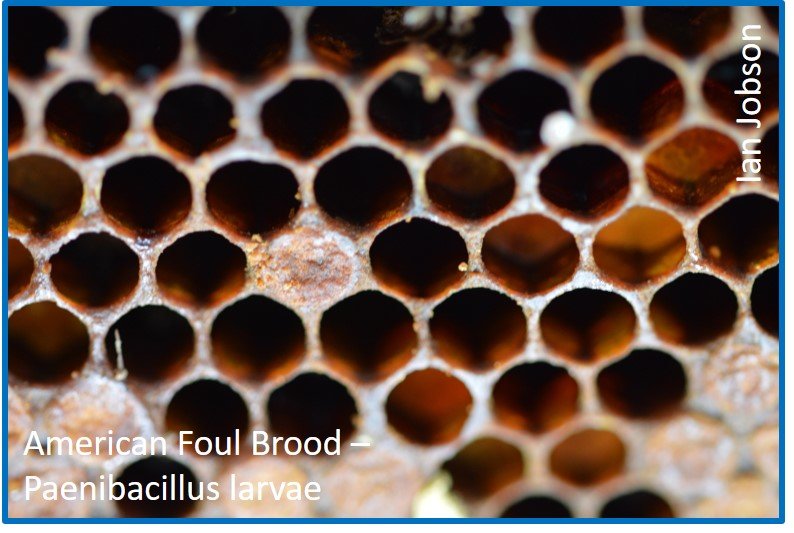
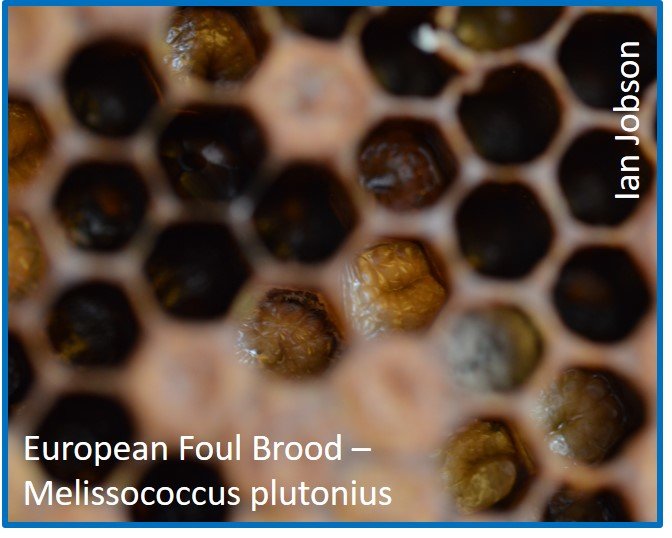
It is clear, that the cleaning and sterilisation methods described in the National Bee Unit leaflet are intended for routine cleaning and sterilisation of equipment and not designed to sterilise equipment that is known to have AFB or EFB.
Scales, strings on matchsticks and sunken, perforated capping are easy to see on heavily contaminated comb, but how would you know if you had 1000 or 10,000 spores of AFB in a frame of brood comb, that is not showing any of these signs?
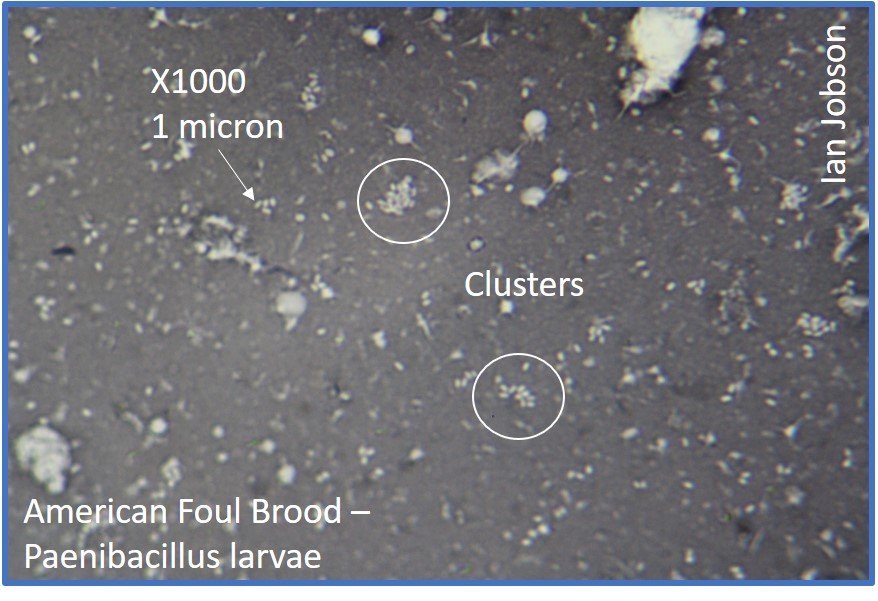
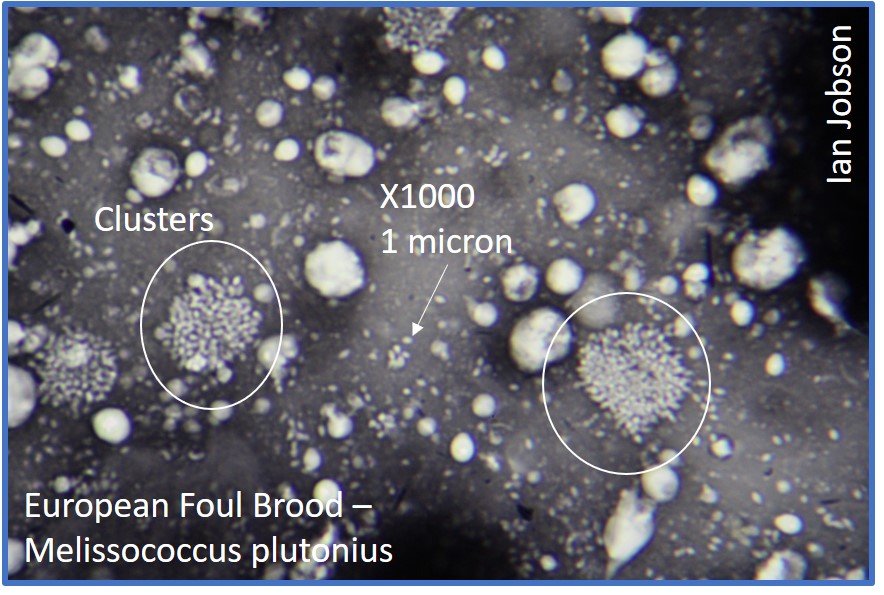
AFB spores can lie dormant for decades and EFB is known to be endemic in UK colonies. However, for many of the sterilisation methods suggested, no evidence is presented on them being effective against undetectable, dormant AFB spores or EFB in its vegetative state.
So, the small-scale beekeeper must assume that the simple methods available to them, for comb sterilisation, will not be effective against undetectable levels of AFB or EFB.
What precautions can we take to reduce the build up of pathogens in brood frames?
To be proactive about the presence of all pathogens and to prevent them from building up, I work with the following assumptions: –
- If any frame shows signs of nosema, chalkbrood, sacbrood or simply has heavily darkened comb, it is assumed that AFB or EFB could be present at an undetectable level.
- It is assumed that any frames with undetectable levels of AFB or EFB, will not be sterilised by any of the methods available to small-scale beekeepers and will be destroyed.
- Only frames and combs that are clear of any signs of chalk brood, nosema and sacbrood are recovered. The assumption that the sterilisation methods will be effective against these pathogens, at an undetectable level.
- To prevent pathogen build-up, brood comb in colonies is replaced regularly. By using brood comb replacement, bailey comb change or shook swarm, at least every two years.
- Frames are inspected individually rather than using techniques which recover frames and wax without inspection of every frame.
This approach will inevitably mean that fewer frames and less wax is recovered from the cleaning and sterilisation session. However, it also means that more used comb is removed. As a result, pathogens have less opportunity to build up in brood comb.
How do I categorise brood frames ?
As brood frames are taken from the brood bodies and nucs, they are assessed into one of the four following categories: –
- 1 – Destroy the frame and its wax
- 2 – Keep the frame, destroy its wax
- 3 – Keep the frame, recover its wax
- 4 – Keep the frame and its wax
Destroy the frame and its wax
These are the frames which have heavily blackened wax, darkened or misshapen woodwork and any which have visible signs of chalkbrood, sacbrood, Nosema or insect frasse. The aim is to take these frames out of action by putting them immediately into a bin bag. This avoids them contaminating any other equipment and the sealed bag will be burned.

The frame above shows brood cells which have become blackened by being used repeatedly over the course of one or more seasons. Other issues with this frame are the insect frasse that can be seen in some of the cells and the bloom of brown spore-like dust covering most of the darkened cells. This frame and wax will be destroyed without any further handling or processing.
Keep the frame, destroy the wax
The next classification of frames is those where the wax is heavily blackened, but the frame is in reasonable condition. There may be no signs of pathogens, but the aim is to take heavily used wax out of action, because this is where the pathogens build up over time.
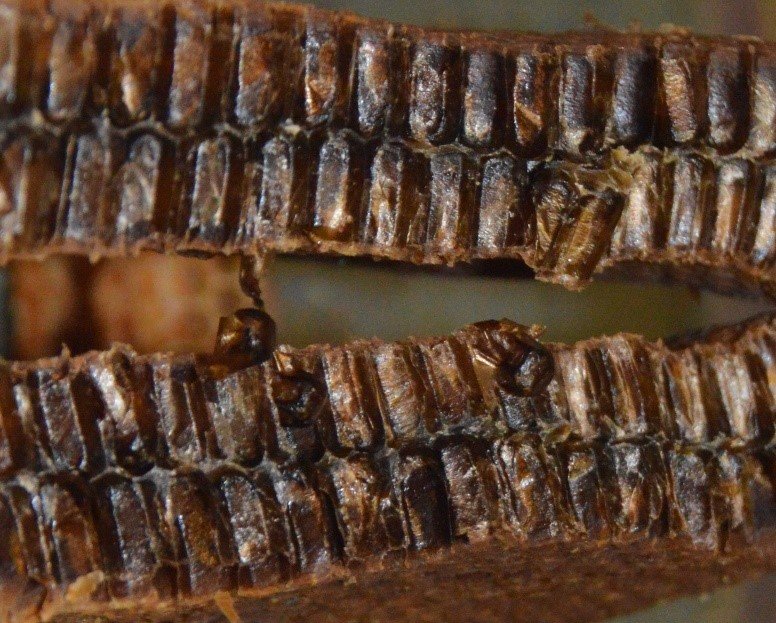
The photo above shows a heavily used comb that has been folded over and snapped to show the lining of the cells, which are built up over time from successive brood rearing.
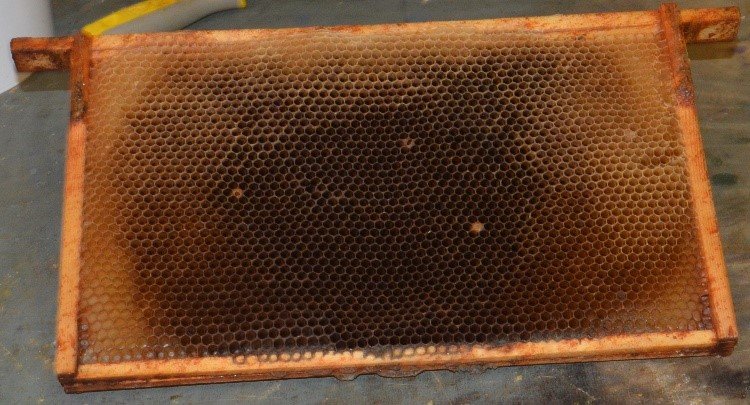
The frame above shows brood cells which have become blackened over time. The wax is cut out of the frame and bagged for burning. The wooden frame is scraped clean, then cleaned and sterilised in boiling cleaning soda solution.
Keep the frame, recover the wax
The next classification is those frames which have woodwork in good condition and wax which has been used to produce brood but is brown rather than deeply blackened and does not show any signs of any pathogens.

The photo above shows comb which has been used to produce brood but is not heavily blackened and shows no signs of pathogens. The wax will be cut out and put into the bain-marie, to recover the wax. Each frame will be scraped clean and processed in the boiling cleaning soda solution.

The photo above shows how the wax is cut out of the frame on the cleaning table with a narrow wallpaper scraper. The table needs regular scorching to ensure no cross contamination takes place between frames.
Keep the wax and frame
The final category of comb is those which have not been used to raise brood, or may have been only lightly used for brood rearing and show no signs of deformation or pathogen. These frames are kept intact and placed in the brood box for treatment with 80% acetic acid. The frames below are examples.
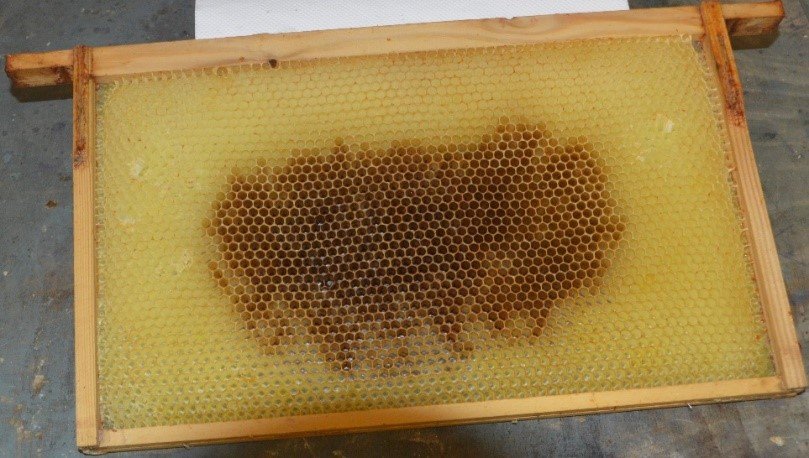
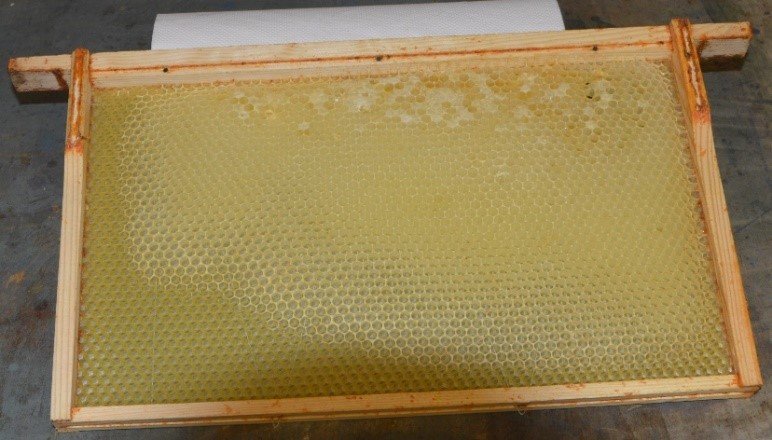
These frames are very valuable to the hive. Many manipulations suggest adding “sterilised drawn comb” to the brood area because they can save a colony a lot of time and effort, making a massive difference to the build-up of a colony.
The big consideration with sterilising these frames is the suggested use of 80% acetic acid, which is a dangerous chemical for use by hobby or small-scale beekeepers.
Summary – Part Two – Assessing Brood Frames
This blog describes a method of assessing brood frames and ways of reducing the potential build-up of pathogens in comb.
The pathogen photographs in this post were taken from brood frames provided by the National Bee Unit to NDB advanced course students. This was done in a bio-secure laboratory. It provided experience of examining confirmed cases of AFB & EFB, as well as the opportunity to make reference slides of the causative agents.
The next blog in the cleaning and sterilisation series is. “Cleaning & Sterilisation for small-scale beekeepers – Part 3 – Recovering Wax & Frames”.
If you have found this blog useful please share it with others, who may find it interesting. If you would like to receive future posts please register on our home page.
References
- Honeybee Veterinery Medicines – Nicolas Vidal-Niquet
- National Bee Unit – Foulbrood Disease of Honey Bees

